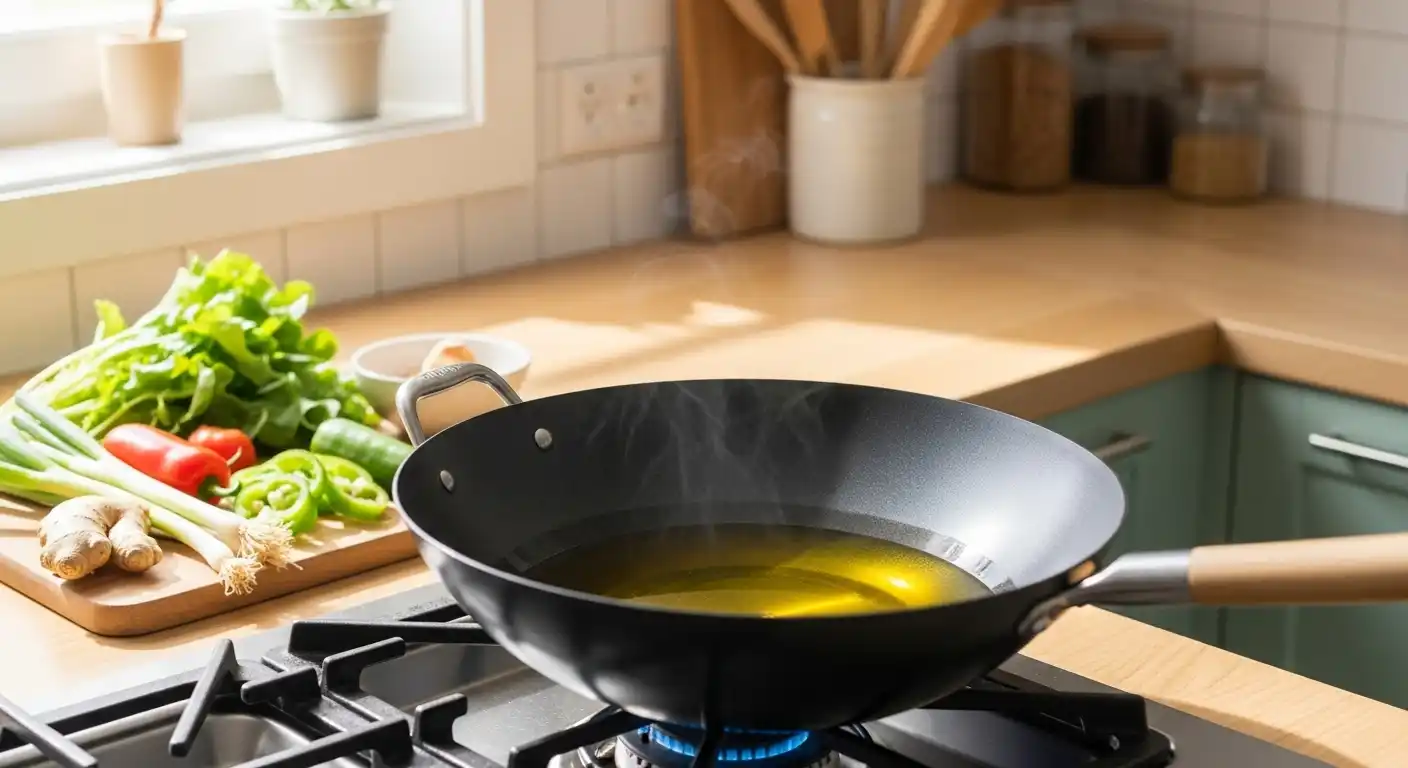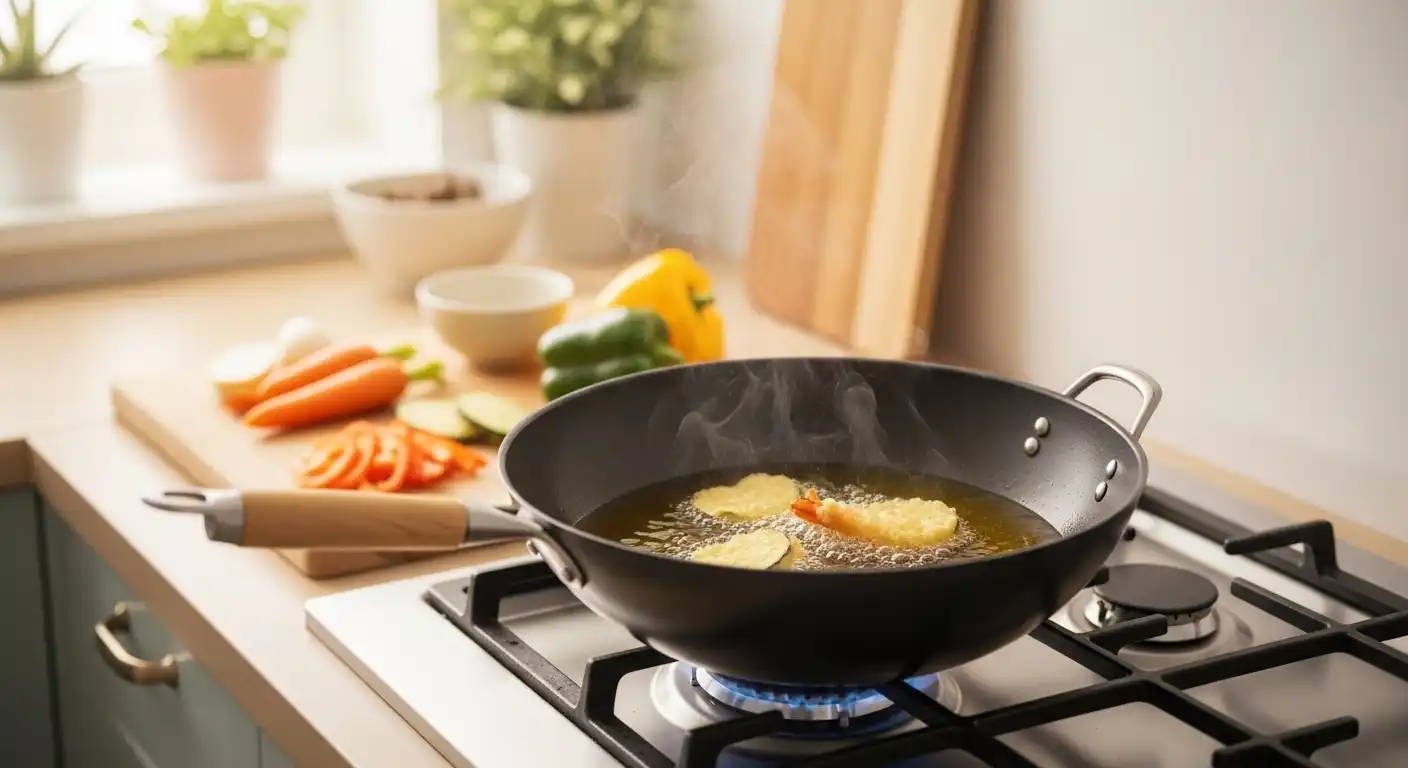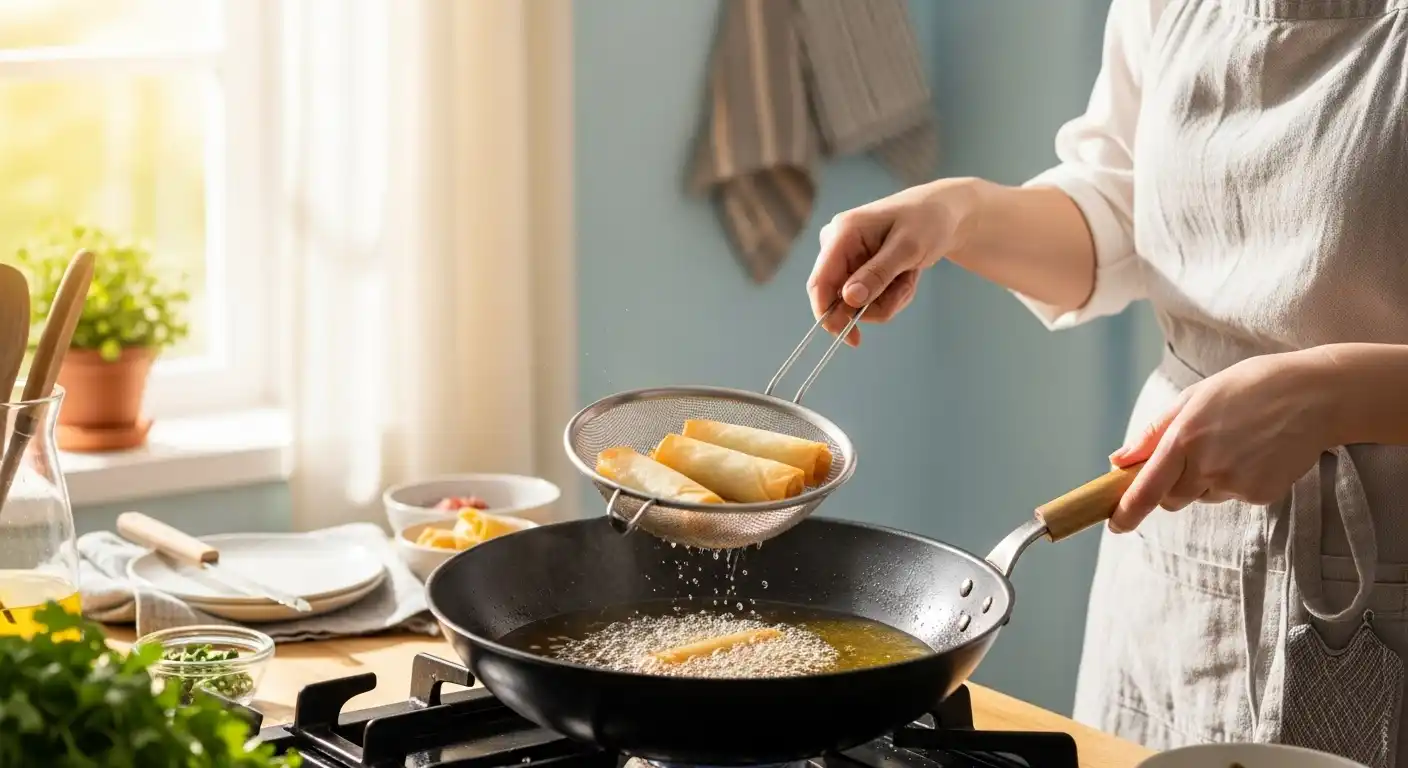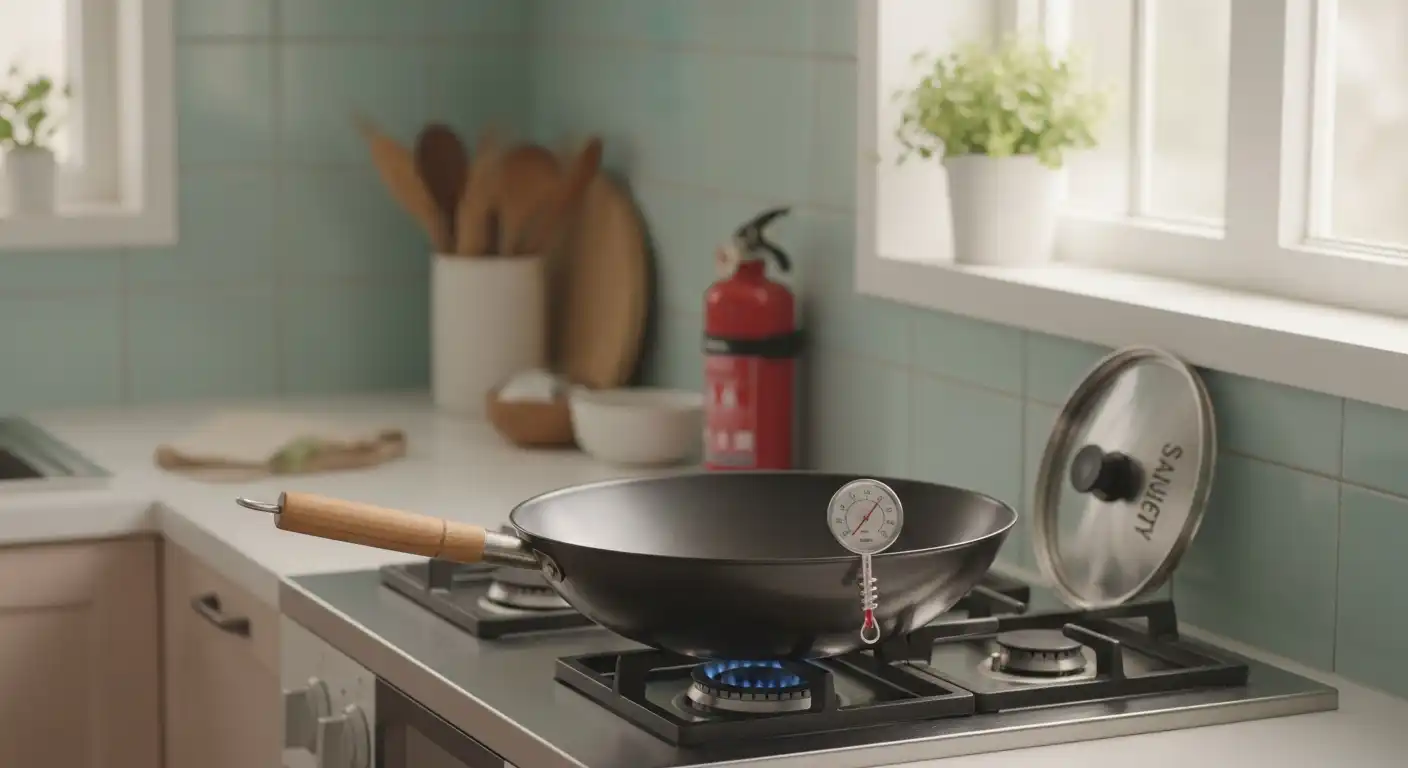Can Wok Be Used For Deep Frying? Let’s Break It Down

When most people think of a wok, stir-frying comes to mind. That swirling of colorful veggies and sizzling meats over a high flame is practically iconic.
But what about deep frying? Can wok be used for deep frying, or should we leave that to the trusty deep fryer or Dutch oven?
If you’ve ever asked yourself this question, you’re in the right place.
Whether you’re planning a crispy batch of tempura or golden-brown chicken wings, let’s explore how your wok might just become your favorite deep-frying companion.
🎄 Christmas & Year-End Amazon Deals !
Don’t miss out on the best discounts and top-rated products available right now!
*As an Amazon Associate, I earn from qualifying purchases.
Why Consider Deep Frying in a Wok?

First things first: woks are designed to handle high heat and distribute it evenly.
This makes them incredibly versatile, not only for stir-frying but also for deep-frying.
The shape of a wok—wide at the top and narrow at the bottom—allows you to use less oil compared to a traditional deep fryer or a stockpot.
You only need enough oil to submerge the food in the lower part of the wok. This means less waste and quicker heating times.
Plus, the tall, flared sides help prevent oil splatters from escaping, keeping your stovetop cleaner.
If you’re new to wok cooking, here’s a helpful guide on how to cook in a wok that will build your confidence.
Key Benefits of Using a Wok for Deep Frying
1. Efficient Oil Usage
Unlike flat-bottom pans, a wok’s design lets you deep fry with less oil, making your cooking both cost-effective and eco-friendly.
Instead of filling a Dutch oven halfway, you may only need a couple of cups of oil in your wok.
If you’re comparing cookware, check out this post on the best wok for deep frying.
2. Quick Heat Response
Most woks, especially those made from carbon steel or cast iron, heat up quickly and retain heat well.
This rapid temperature recovery is essential for deep frying, ensuring your food cooks evenly and stays crispy.
Curious about what type of wok to buy? This article on what wok should I buy can point you in the right direction.
3. Spacious Cooking Surface
The broad top of the wok gives food plenty of space to cook without overcrowding, which is a common cause of soggy, greasy fried food.
You’ll achieve that perfect crunch faster and with better results.
🎄 Christmas & Year-End Amazon Deals !
Don’t miss out on the best discounts and top-rated products available right now!
*As an Amazon Associate, I earn from qualifying purchases.
Potential Downsides to Keep in Mind
Of course, no cookware is perfect for every task. Here are a few things to keep in mind when deep frying in a wok:
Oil Temperature Control
Woks are designed for high heat, but maintaining a stable oil temperature can be tricky without a thermometer.
Too hot, and your food burns. Too cool, and it absorbs oil, becoming greasy.
A simple fix? Use a deep-fry thermometer clipped to the side. It’ll help you maintain the ideal frying range—typically between 350°F and 375°F.
Stability on Flat Stovetops
Round-bottom woks can be unstable on electric or glass stovetops. In those cases, a flat-bottom wok is your best bet.
Or, you can use a wok ring to stabilize it on your burner. Learn more about using a wok on a glass top stove here.
Can Wok Be Used For Deep Frying on All Stovetops?
Great question! The answer depends on your stove type and the wok you have.
- On gas stoves, any wok works well, especially with a wok ring.
- On electric stovetops, a flat-bottom wok is recommended. This guide on how to use a flat-bottom wok on an electric stove will help.
- For induction cooktops, only magnetic woks like carbon steel or cast iron will heat efficiently. Learn more about using a wok on induction cooktops.
If your kitchen setup favors cast iron, you might be wondering how a Lodge cast iron wok holds up.
Here’s a deep dive into its capabilities: Lodge Cast Iron Wok Review.
How to Deep Fry in a Wok: Step-By-Step

1. Prep Your Ingredients and Oil
Cut your ingredients into even-sized pieces so they cook uniformly. Use oils with high smoke points like peanut, canola, or sunflower oil.
2. Heat the Oil Properly
Add enough oil to create a 2-3 inch pool at the bottom of the wok. Heat the oil to 350°F–375°F.
3. Fry in Batches
Don’t overcrowd the wok. Fry in small batches to keep the oil temperature consistent.
🎄 Christmas & Year-End Amazon Deals !
Don’t miss out on the best discounts and top-rated products available right now!
*As an Amazon Associate, I earn from qualifying purchases.
4. Drain and Cool
Use a spider strainer to remove food and place it on a paper towel-lined tray to drain excess oil.
And there you go—perfectly deep-fried goodness, wok-style.
Wok vs. Other Deep Frying Alternatives
Some cooks might still prefer a Dutch oven or an enamelled cast iron pot for deep frying.
These vessels have thicker walls and hold temperature longer, though they require more oil.
If you’re interested in comparing them, this article on wok vs Dutch oven highlights their differences.
Another deep-frying option worth considering is the enamelled cast iron, which you can learn about here.
Pro Tips for Safe and Successful Deep Frying in a Wok

- Never fill your wok more than halfway with oil. This minimizes the risk of dangerous spills.
- Keep a lid nearby to smother flames in case of an oil fire. Never use water!
- After frying, let the oil cool before disposing of it responsibly.
- Clean your wok properly to prevent leftover oil residues. Here’s how to clean a cast iron wok.
What Else Can You Cook in a Wok?
Beyond frying, your wok is great for dishes like popcorn, steaming dumplings, or even cooking rice.
Check out this post on what can you cook in a wok besides stir fry to discover more possibilities.
Final Verdict: Can Wok Be Used For Deep Frying?
Absolutely! A wok is a fantastic tool for deep frying—especially for small to medium batches.
Its efficient heat distribution, oil-saving design, and versatility make it a smart choice for home cooks who don’t want another single-purpose gadget cluttering their kitchen.
That said, it’s important to match your wok to your stove type and use proper techniques to get the best results.
For further reading, you might enjoy comparing a wok vs frying pan to understand their unique benefits in the kitchen.
🎄 Christmas & Year-End Amazon Deals !
Don’t miss out on the best discounts and top-rated products available right now!
*As an Amazon Associate, I earn from qualifying purchases.
So, next time you’re in the mood for crispy spring rolls or fried chicken, give your wok a chance. You might never reach for your deep fryer again.
